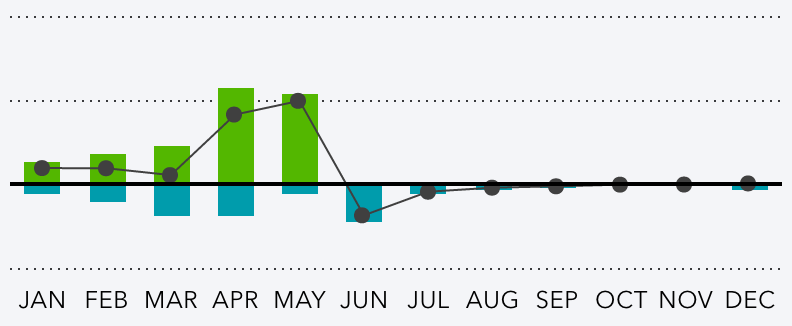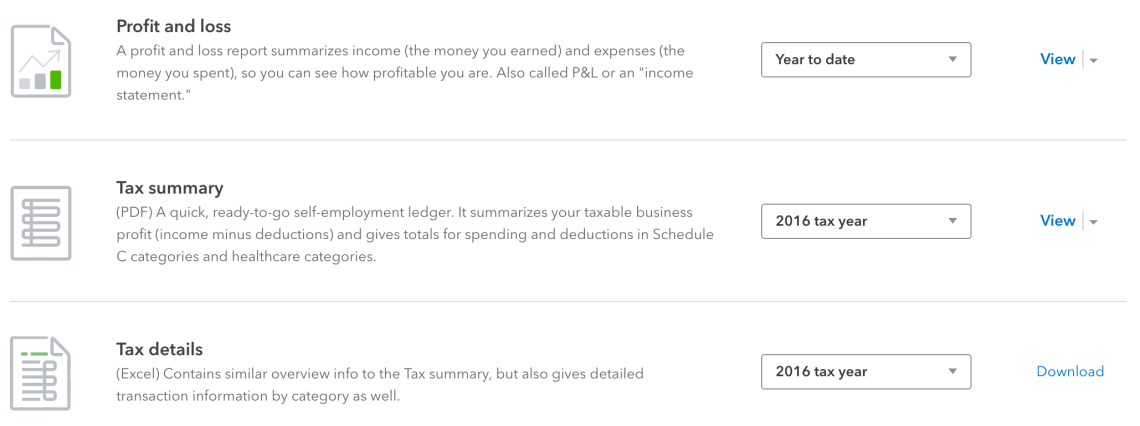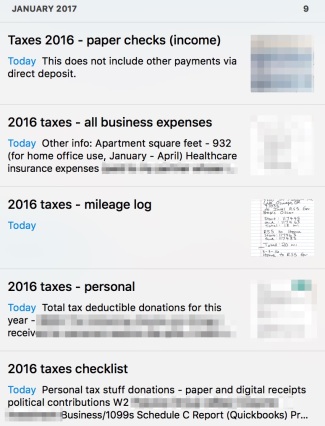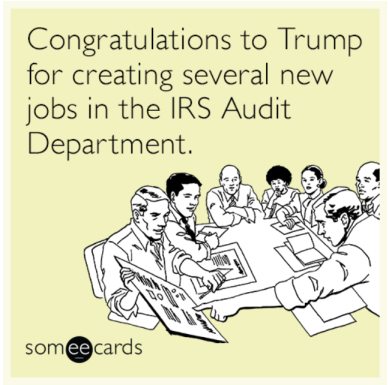
It’s been a while – about 8 months – since I transitioned from independent consulting to a full-time in-house job, but I jumped back into that world briefly this week to get my finances in order for filing taxes. I spent a few hours this week, plus a handful of hours over the course of 2016, organizing things to make it easier on myself in the new year. Knowing that taxes can be complicated for consultants, I wanted to balance time and effort spent with just the right amount of professional help to feel assured and avoid errors. Here’s a quick rundown of the tools, resources and process that worked for me.
Get an accountant!
If you’re going all in with consulting and don’t want to deal with the nitty gritty of filing, this is a wise investment and will save you time, energy, and headaches with the important questions and milestones. My accountant kept me up to date with payments, answered all of my questions, communicated quickly via email, and did not try to bill me for unnecessary time or materials. Plus, you can write off tax services as a business expense. If you are in Portland, OR, I highly recommend Danny Pittenger at Schultz & Crouse.
Use some kind of tax software for record keeping
Now, I didn’t just save up all my receipts and other financial info and drop it off at Danny’s office in a shoebox. I could have, but that would have been a huge waste of money to pay him to spend hours making sense of it all. Instead, I track of all expenses and income along the way using Quickbooks Self Employed from Intuit. I had used Intuit’s Turbotax in previous years for simpler filing situations, and found the software to be very user-friendly (Intuit is known for its good UX design). I also wanted to be able to check out my financial stats whenever I wanted to – how much I’ve spent and earned, what categories I’m spending the most in, etc. I logged into Quickbooks maybe once every month or two to update transactions, check my stats, and watch the height of the bar graph columns go up 😁.
Conveniently, Quickbooks enables you to hook up your bank and credit accounts so you don’t have to enter transactions manually. Transaction details can be edited and placed into business and personal spending, in case you have an account used for both. It spits out nifty graphs, charts and reports on spending, earnings, profit and loss, etc. I was also able to email reports to Danny every now and then so he could calculate how much I should pay into my estimated federal and state taxes. It has various other features like invoicing, mileage, and rules for automating transactions. The mobile app is great and has just about the same features as the full site. Importantly, the monthly fee is not expensive at $11.99 for the discounted introductory price and $16.99 for the regular price.



Maintain a decent filing system for documents
Any paper documents like checks, receipts, mileage logs, etc., went into a manila folder on my desk marked “Business taxes 2016”. Digital receipts, invoices, etc. went into a folder in my Gmail account with the same name. This is all I really needed to do up until this week, when I went through and scanned all the paper ones into Evernote, and put screen shots of the digital ones (from email, Amazon, etc.) there as well. Evernote lets you take a screen shot that automatically gets placed into the document, wherever you want it. I also used Evernote to create separate notes for expenses, income, mileage, and an overall tax filing checklist. I can easily share links with Danny if he needs additional information beyond my Quickbook reports. Now everything is in multiple physical and digital places, just in case. Scanning physical paper is also good because printed materials can fade over time (especially store receipts).
 View of Evernote notes in my Taxes folder
View of Evernote notes in my Taxes folder
 Gmail makes it easy to file things away and access them later, in chronological order
Gmail makes it easy to file things away and access them later, in chronological order
Keep a checklist for the bigger tax picture
I mentioned keeping a checklist in Evernote. Once it comes time to file, I can easily keep track of what I’ve done and what I still need to do. On the list I have both personal and business tax to-dos. Personal ones include things like tallying up any tax-deductible donations, acquiring investment and student loan interest documents, and a list of any W2s I’m expecting. Business ones are things like sending tax reports to Danny, any W9s I’m expecting from contract work, scanning and filing all documentation, etc.
Don’t wait till the last minute!
As I mentioned, I spent a few hours this week and maybe 10-15 over the course of the year organizing all of this stuff so I wouldn’t have to do it all at once at the end. I made sure I paid my estimated taxes each quarter so I wouldn’t end up with a huge payment due or have to pay penalty fees. As I learned, having a process and tools in place helps make it easier on you – and your accountant- when tax season comes a-knocking. Trust me, you’ll depreciate it.


Great tips. Thank you.